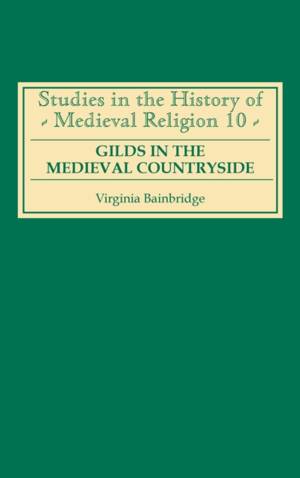
Bedankt voor het vertrouwen het afgelopen jaar! Om jou te bedanken bieden we GRATIS verzending (in België) aan op alles gedurende de hele maand januari.
- Afhalen na 1 uur in een winkel met voorraad
- Gratis thuislevering in België vanaf € 30
- Ruim aanbod met 7 miljoen producten
Bedankt voor het vertrouwen het afgelopen jaar! Om jou te bedanken bieden we GRATIS verzending (in België) aan op alles gedurende de hele maand januari.
- Afhalen na 1 uur in een winkel met voorraad
- Gratis thuislevering in België vanaf € 30
- Ruim aanbod met 7 miljoen producten
Zoeken
Gilds in the Medieval Countryside
Social and Religious Change in Cambridgeshire C.1350-1558
Virginia R Bainbridge
€ 153,45
+ 306 punten
Omschrijving
This is a study of religious gilds in Cambridgeshire, from their apparent proliferation in the mid-fourteenth century to their dissolution under Edward VI, and their failure to return during the Catholic revival of Mary I's reign. Gilds, or fraternities, reflected the social hierarchies of their communities; local gentry acted as patrons, and below them an oligarchy of wealthier tenants exercised control through manorial, gild and parish office. Fraternities benefited their members by fostering mutual charity in life and commemoration after death; they made substantial contributions to the parish through the organisation of religious devotions and the maintenance of additional priests, and in social and economic terms through the ownership of land, animals and other corporate amenities such as gild halls.
Dr Bainbridge examines lay responses to changing devotional and doctrinal patterns; the inter-relation of the religious and the secular; and the differing role of gilds in both rural and urban parishes, in the densely settled shire of Cambridge and the sparsely populated fens of the Isle of Ely. Her study is based on the returns to the 1388-9 survey of religious gilds and surviving gild records, and a sample of about two thousand wills provides the context; manorial records, poll-tax returns and letters patent give further information on the communities in which they flourished
Dr Bainbridge examines lay responses to changing devotional and doctrinal patterns; the inter-relation of the religious and the secular; and the differing role of gilds in both rural and urban parishes, in the densely settled shire of Cambridge and the sparsely populated fens of the Isle of Ely. Her study is based on the returns to the 1388-9 survey of religious gilds and surviving gild records, and a sample of about two thousand wills provides the context; manorial records, poll-tax returns and letters patent give further information on the communities in which they flourished
Specificaties
Betrokkenen
- Auteur(s):
- Uitgeverij:
Inhoud
- Aantal bladzijden:
- 189
- Taal:
- Engels
- Reeks:
- Reeksnummer:
- nr. 10
Eigenschappen
- Productcode (EAN):
- 9780851156170
- Verschijningsdatum:
- 20/11/1996
- Uitvoering:
- Hardcover
- Formaat:
- Genaaid
- Afmetingen:
- 156 mm x 234 mm
- Gewicht:
- 444 g

Alleen bij Standaard Boekhandel
+ 306 punten op je klantenkaart van Standaard Boekhandel
Beoordelingen
We publiceren alleen reviews die voldoen aan de voorwaarden voor reviews. Bekijk onze voorwaarden voor reviews.









